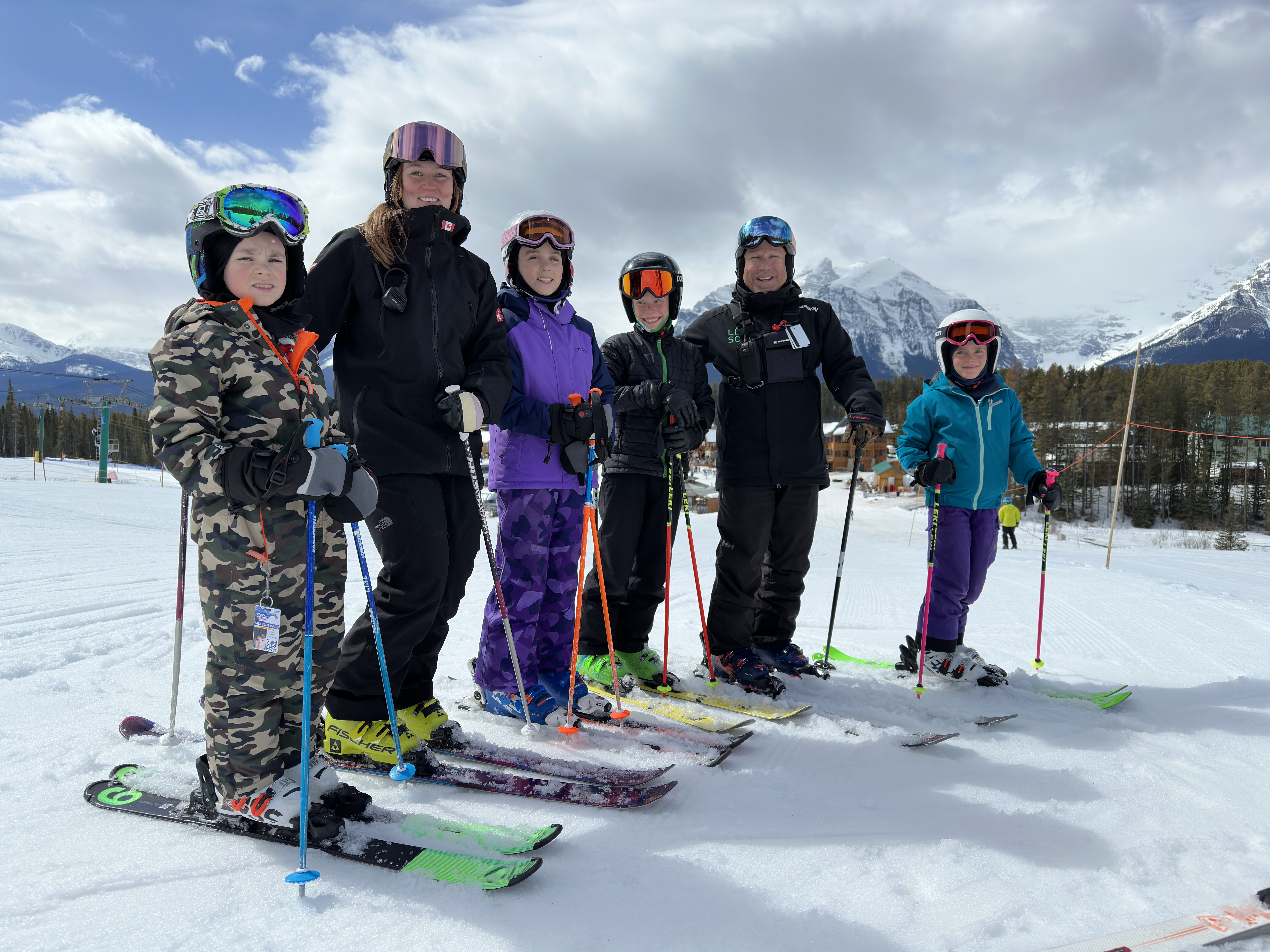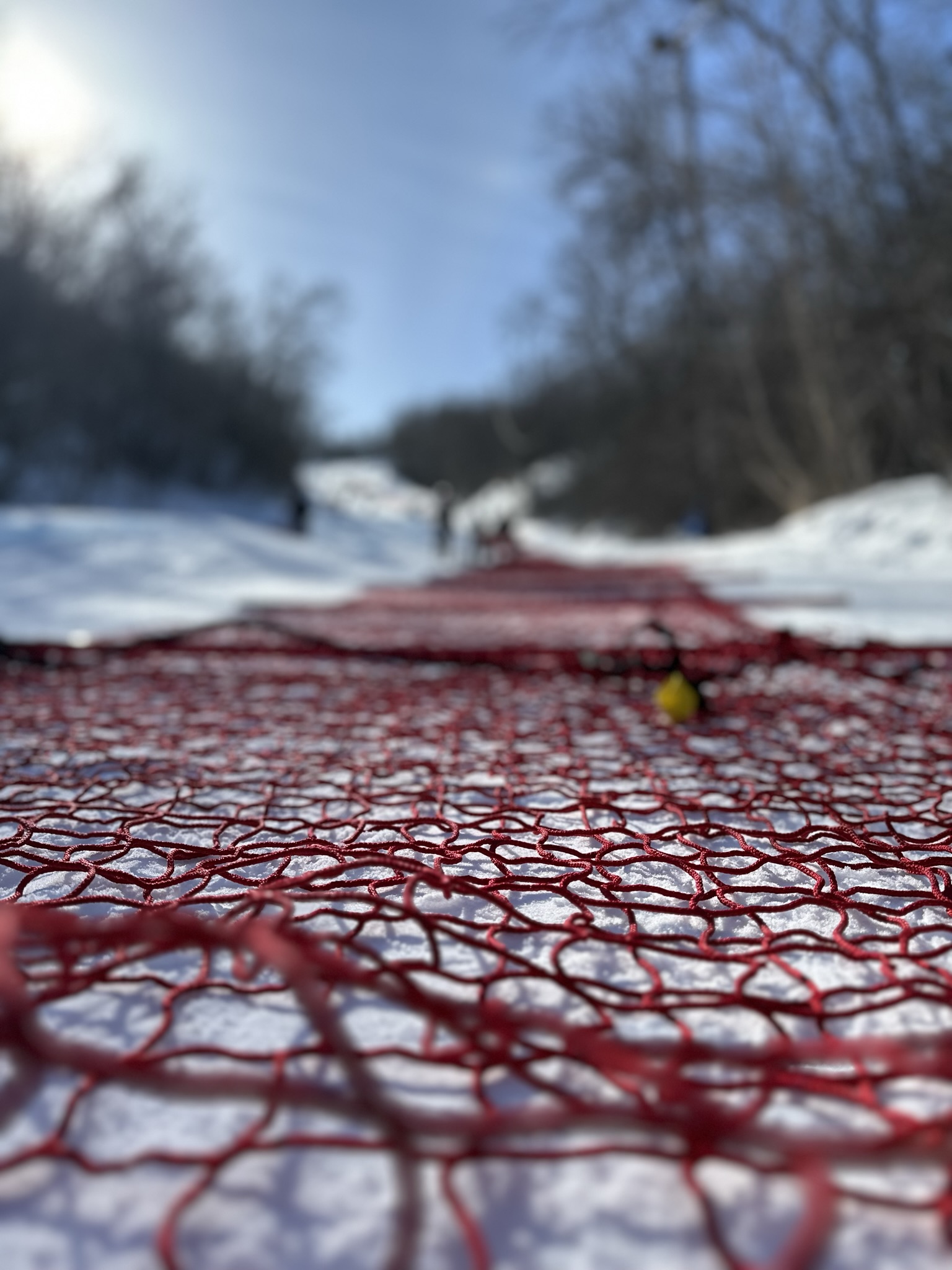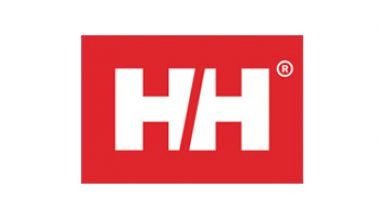Train to Train
BUILD THE SKI RACER
Ski racers in the Train to Train stage are focused on transferring fundamental technique and basic tactical skills into the competition environment. While ski racers start competing more seriously, the major focus during competition is on applying what they've learned in training and not on winning at all costs. Ski racers begin to specialize in the sport(s) of their choice in this stage. Ski racers are introduced to a variety of critical race elements from start to finish including movement over terrain and gliding. Ski racers begin formalized speed and ski cross training progressions to develop their skill set in these areas.
Photo: Erik Read, 2004 Whistler Cup Slalom.
KEY CONCEPTS
Ski racers in the Train to Train stage are focused on transferring fundamental technique and basic tactical skills into the competitive environment.
The Train to Train stage typically starts when the ski racers major growth spurt begins. The beginning of the rapid growth period can vary widely from individual to individual. Peak height velocity, when the skier racer grows the fastest, occurs on average at the age of 14 in boys and 12 in girls. The teen years are awkward and tough on ski racers, coaches and parents. Periods of rapid growth may cause some skill regression, which can be frustrating to ski racers. They need to understand that this is normal and that they should not drop out! Parents and coaches need to demonstrate patience and understanding.
A parents role will also begin to shift at this stage when ski racers become more independent. A parent will transition from helping their ski racer to learn the fundamental movement skills through participation with the ski racer. However, we strongly encourage ski racers to continue to ski with family and friends as often as possible. Providing positive feedback and ongoing encouragement as often as possible will increase the experience for every ski racer.
THE GOAL IS TO MAXIMIZE THE NUMBER OF DAYS AND TIME ON SKIS WHILE FOSTERING THE LOVE OF SKIING.
- Ski racers will begin to focus on a couple of sports. Ski racers will at times show a preference for certain disciplines like slalom, giant slalom, speed or ski cross. While it's good to encourage enjoyment of a discipline, it's still too early to specialize in a single discipline. Promote the development of their skiing athleticism through encouragement and support for participation in multiple disciplines and another sport outside of ski racing.
- Your ski racers training year should be periodized into one to two cycles. The cycles are then broken down into several phases, each with a training focus. To learn more about periodization ask your ski racers coach to explain the periodized plan they have set up for your ski racer.
- Competition becomes more important with ski racers spending about 40% of their time in competition and 60% of their time training for competition. Too much competition can waste valuable training time, but too little competition can slow the learning of technical and tactical decision making skills in competition. Creating training environments that simulate competition and the adaptation of technical skiing skills in tactical situations is encouraged.
- Choosing the proper equipment at this stage plays a pivotal role in a ski racers enjoyment of the sport. Equipment that is well tuned, fits the ski racer, matches the ski racers size and ability, can make skiing more fun, increase success and reduces the chance of injury.
- Physical fitness becomes a priority at this stage. Stamina, endurance, is essential to provide the ski racer with the ability to complete longer training bouts.
- Ski racers begin participating in formalized ski conditioning off-snow training sessions. Both aerobic and strength trainability depend on the maturation level of the skier.
- Aerobic training remains a priority. In the sport of ski racing, a good aerobic endurance base is required to maintain high levels of skill execution run after run in training and competition.
- Young ski racers are encouraged to continue to practice the fundamental movement skills through the growth spurt along with maintaining flexibility, speed and strength.
- Strength training should be monitored to ensure the ski racer has passed their peak height velocity and is ready to begin weight training. For boys, it's about 12-18 months past their peak height velocity.
- Incorporation of basic mental skills training to develop their athletic character should continue. Ski racers need to learn how to cope with the physical and mental challenges of competition.
The end of the Train to Train stage is also a time of differentiation, there are many possible pathways for adolescent ski racers to pursue:
- Staying on their current performance pathway from competition introduction in the Train to Train stage to competition development in the Train to Race stage.
- Transfer and adapting skills learned in the foundation stages and learning new abilities in a new discipline or sport.
- Transfer of knowledge by participating in a coach in training program and completing formalized ACA-CSC coach education and CSIA courses.
LTAD PARENT TIPS
|
General |
Ski racers in the Train to Train stage are focused on transferring fundamental technique and basic tactical skills into the competitive environment. A parents role will also begin to shift at this stage when ski racers become more independent. A parent will transition from helping their ski racer to learn the fundamental movement skills through participation with the ski racer, to more of an advisory, supportive role. |
|---|---|
|
Coaching |
Hire only trained or certified coaches who follow the ACA LTAD guidelines. |
|
Equipment |
Ensure all equipment is properly fitting, skis are tuned and waxed, boots are properly sized and warm clothing is provided to ensure the best opportunity for success. Click on the equipment tab for more details. |
|
Family |
During this stage, many families become integral members of ski clubs through volunteering or social gatherings. Becoming a race official allows parents to be involved in their ski racers development and show support. The ski club becomes an extended family and support system for parents, coaches and ski racers. Teamwork both off and on the ski hill is required for ski racing success. Continue to encourage your ski racer during this stage. Remember they are going through some of the toughest years during puberty. There will be ups and downs in performance, be there to support and guide. |
|
Building Athletic Character |
Ski racers are encouraged to develop their the mental skills that lead to enjoyment and success in ski racing including:
Ski racers are encouraged to develop a positive work ethic and responsibility for their performances in training and competition. Ski racers begin to learn how to accept mistakes and setbacks as learning opportunities while celebrating success resulting from their hard work. |
|
Training & Competition Volumes |
Ski racers should aim to ski as often as possible when the ski areas are open. Aiming for a minimum of 80+ days per year or skiing. Ski racers seeking the competitive pathway should aim to complete as many days as possible beyond the minimum number of days. Spring, fall and summer camps are recommended. U16 ski racers are encouraged to complete up to 30 days of on-snow training prior to December 1st annually. Skiing three to five times per week is optimal for developing proficiency in the application of their fundamental skiing skills in tactical situations. The number of competition starts ranges from 12 to 20 starts per season for U14 ski racers and 16 - 24 starts per season for U16 ski racers. Typical events include giant slalom, slalom, dual/team events, super G and formalized introduction to ski cross and downhill. Ski racers begin to compete in Provincial, Regional and National competitions and training opportunities like Rising Stars, U16 Nationals and Canada Winter Games. International competition is possible at the Whistler Cup and FIS Children events in Europe. |
|
Physical Literacy |
During this time period of accelerated growth and maturation, ski racers are encouraged to refine their fundamental movement skills and foundational technical skiing skills with the intent to maintain overall athleticism through this stage. |
|
Choosing a Club |
One of the most important decisions you will make during the career of your ski racer is determining which club to join. Use the information in the next section to assist in choosing your ski club. |
|
Health & Wellness |
Adolescent ski racers can be introduced to more formal health & wellness education in the areas of sleep habits, nutrition, hydration, time management and growth and development. The responsibility for taking care of themselves will shift from the parent to the ski racer. Parents should serve as a guide the adolescent ski racer as they become more independent. |
CHOOSING A CLUB
Choosing a club that fits your family is one of the most critical decisions. Here are some sample questions to use when researching the best organization for you and your ski racer.
- Are the coaches certified in the National Coaching Certification Program?
- What coaching experience do they have and at what levels?
- Do they have healthy short and long-term goals?
- Has the club undertaken the Responsible Coaching Movement pledge?
- Do they have secure 'Safe in Sports Policies'?
- Do they follow the ACA LTAD guidelines?
- What is the overall reputation of the club for providing a quality sports environment for ski racers at the Train to Train stage?
- Does the program emphasize the proper development of the fundamental movement, foundational technical skiing skills and tactical application of the foundational skiing skills?
- Do they provide an off-season conditioning program? Is there an increased cost for this service?
- Do they work with a complementary sports club to offer multi-sport exposure to develop athleticism?
- Do they participate in annual fitness testing at least three times per year?
- What is the club reputation amongst parents of current ski racers?
- How many days on snow (volume) is available to your ski racer and is it consistent with the ACA LTAD recommendations for the Train to Train stage?
- What is the cost? Volunteer expectations?
- What is the driving time to the hill (proximity)?
- Is there an equipment pool available? Do they host an annual ski swap where lightly used equipment can be purchased?
- Do they host a pre-season equipment purchase event with knowledgeable coaches and technicians present to help with equipment fitting and selection?
- Are they committed to creating efficiencies for the parents and ski racers?
EQUIPMENT
The proper equipment set up and fit can help provide the ski racer with a positive sports experience that gives the ski racer increased chances of having success in training and competition. Poorly fitting, improperly adjusted or un-tuned equipment can prevent a ski racer from successfully developing their technical and tactical skills.
Ski racers seeking the competitive pathway will have their boots professionally fitted and will begin to learn how to tune their equipment.
For more information on equipment selection, please review the following webisodes aimed at selecting and fitting equipment for the U10 to U14 ski racer and boot setup for the U16-U18 skier racer while working in partnership with your ski racers coach to ensure the ski racer has the best equipment set up to promote proper skill development and execution in training and competition.
Alpine Canada Partners and Equipment Pool Suppliers
TO REVIEW EQUIPMENT REQUIREMENTS FOR THE TRAIN TO TRAIN STAGE, PLEASE VISIT THE TRAIN TO TRAIN EQUIPMENT PAGE.
MAINTAINING BALANCE & EDUCATION
While it is a challenge to raise active ski racers, it's not impossible to create a balance between participation in sports, family time, social time and education.Maintaining a balanced family life that fosters the development of healthy habits includes:
- Scheduling family time and activities where the family can be active together.
- Ensure that everyone in the family has time for rest and regeneration.
- Finding a balance between school, sports, and encourage ski racers to participate in other sports as desired.
- Working in partnership with your ski racer to develop a simple monitoring routine to assist ski racers with their recovery between training and competition bouts.
- Allow time for social "play" time with other ski racers and friends in an unstructured environment like the park or ski area.
- Getting involved, as a parent, through volunteer activities at the ski racer's club.
Education balance varies between grades 8 & 9 and 10 and includes some of the following preventative activities:
- Encourage the use of a student planner or calendar to assist with maintaining balance.
- Encourage the ski racer to communicate with their teachers; parent communication should reinforce the student contact when necessary.
- Provide appropriate notice for school absences.
- In grade ten (U16), ski racers seeking the competitive pathway are recommended to take one course online. Math is a good option for an online course.
- Parents of U16 ski racers must also maintain an open line of communication between teachers, school counsellors and coaches.
- Each school and ski racer is different; it's essential for the coaches, parents and teachers to be aware of the individual ski racers goals and aspirations on and off the snow.
EDUCATIONAL REFERENCE:
Adams, K. BC Alpine AGM Presentation: Education and Ski Racing - Finding a Balance
REFERENCES:
ACA LTAD Train to Train Webinar
Sport for Life - Long Term Development in Sport & Physical Activity 3.0. Higgs, Colin & Way, Richard & Harber, Vicki, Jurbala, Paul, Bayli, Istvan. (2019). Long-Term Development in Sport and Physical Activity 3.0. Canadian Sport for Life. ISBN: 978-1-927921-62-3.
Canadian Sport for Life Article: Maximizing the Sport Experience for our Children by Dina Bell-Laroche
Webinar reviewing Selection & Fitting of Equipment for U10 to U14 ski racers
Webinar reviewing Boot Setup for the U16 & U18 ski racer
Adams, K. BC Alpine AGM Presentation: Education and Ski Racing - Finding a Balance
ACA LTAD Training and Competition Focus Matrix
ACA LTAD Training and Competition Volume Matrix


.jpg)


